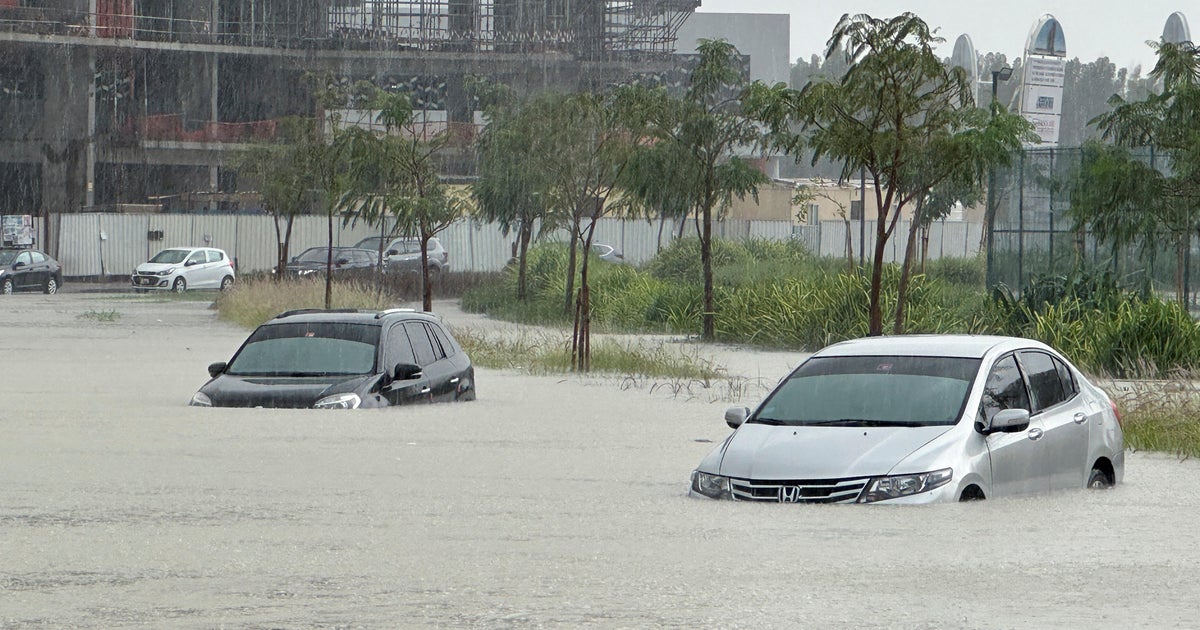Experts warn more India glacier disasters "can't be avoided" without better monitoring
New Delhi — Nearly four days after the partial collapse of a glacier and the subsequent flash flooding of a valley in northern India, rescue workers were still struggling to reach 34 people believed to be trapped in a tunnel in the state of Uttarakhand on Wednesday. Rescue workers armed with heavy construction equipment, drones and even sniffer dogs were struggling to penetrate the one-and-a-half-mile long tunnel that filled with ice-cold water, mud, rocks and debris when the disaster struck on Sunday.
Apart from the 34 people who rescuers still hope to find alive inside the tunnel, there were more than 150 others also listed as missing on Wednesday, most of them likely swept away from two hydroelectric power plants. At least 32 people from the two facilities have been found dead.
As the rescue mission races ahead, scientists have started to get a slightly clearer picture of what might have triggered part of the glacier to break off and crash into the river.
A team of experts from Wadia Institute of Himalayan Ecology is on ground in Uttarakhand to collect evidence that could help answer the question of what exactly caused the disaster: Was it the effects of climate change, or an avalanche caused by seismic activity, or a mix of several factors?
The team is expected to give a report over weekend, but some experts believe, based on satellite data and other evidence, that it was actually a hanging chunk of the glacier that broke off and caused a "rock and ice avalanche."
"Satellite data does show that there was a crack in the glacier," Dr Farooq Azam, a professor of glaciology and hydrology, told CBS News. "It's very much clear now that the hanging glacier falling off from 5,600 meters into the river caused the rock and ice avalanche."
He insisted that it was too soon to blame the event on climate change, arguing that more data would be needed to draw that conclusion.
"We have no evidence there was a glacial lake… The lakes are normally formed because of climate change and global warming, and after some time they burst. So Sunday's event may or may not be linked with climate change," Azam told CBS News.
"We still have a lot of uncertainty in terms of what exactly could have caused Sunday's disaster," renowned expert on the Himalayas, Dr. Anjal Prakash, a lead researcher with the United Nation's Intergovernmental Panel on Climate Change (IPCC), told CBS News.
Without study, disasters "can't be avoided"
That uncertainty is due partly to a lack of sufficient data on the glacier — one of thousands across the Himalayan mountains that aren't being monitored. There are more than 50,000 glaciers across the Himalaya's Hindu Kush range, from Afghanistan and Pakistan into India, Nepal and Myanmar. Government agencies monitor only 24 of them. Scientists warn this could prove disastrous again in the future, and they say it must change.
"This is a climate change hotspot region," said Prakash. "We must know what is happening in these areas… The government agencies either don't have the resources or lack focus."
The Himalayan glaciers are a lifeline for 240 million people across South Asia, providing drinking water, irrigation, hydropower and biodiversity. About 86 million of those people live in India.
The Indian state of Uttarakhand alone has some 1,500 glaciers, but only 15 are monitored.
"We need more focus on research in these areas, otherwise we will not be able to strike a balance between environment and economic development," said Azam, referring to the need for more hydroelectric power projects, roads and other infrastructure in the region.
India, which still relies on coal for 70% of its electricity production, is using only 40% of its hydroelectric power potential. While abandoning fossil fuels to take advantage of more of that potential may seem an environmentally friendly option, it comes with its own risks.
"Himalayas are a new mountain range and therefore very fragile. They are still settling in terms of rock formation and other things. The fragility of the environment is very high. If you disturb rocks, by tunnelling or deforestation needed for large-scale projects, then you're disturbing the ecology," Prakash told CBS News, stressing that infrastructure development must happen in an "environmentally benign way."
"If the hydroelectric projects are set up without enough study of the ecology and monitoring of the glaciers around them, disasters like Sunday's can't be avoided," Azam told CBS News.
A 2019 report by the U.N.'s IPCC warned that glaciers would continue to retreat over the coming years, causing more landslides and floods as they do. Another study published the same year cited satellite data gathered over 40 years to warn that the average rate of ice loss in the Himalayan glaciers had doubled in the most recent decade.
Both scientists who spoke to CBS News insisted on the need for increased monitoring of the Himalayan glaciers, which they say, regardless of the precise origins of Sunday's disaster, are indisputably vulnerable to the effects of climate change.






